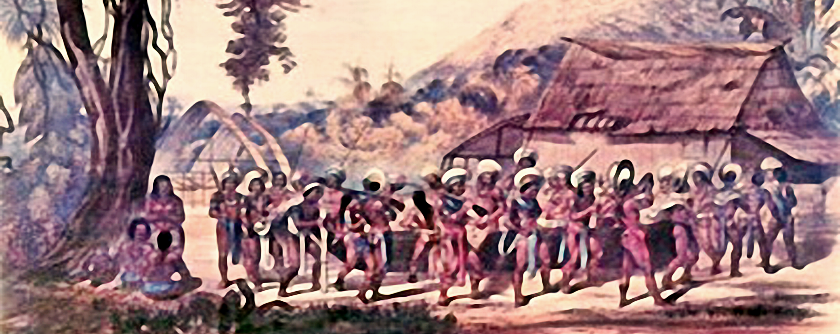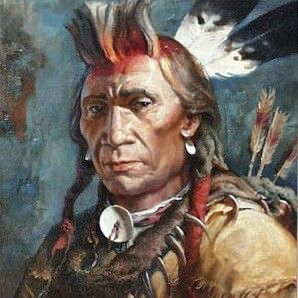Caribs Of The Eastern Caribbean
The Caribs of the eastern islands were a highly mobile group; they possessed canoes similar to those of the Arawaks, but they employed them for more warlike pursuits. Their social organization appeared to be simpler than that of the Arawaks.

Social Order Cultural Traditions
They had no elaborate ceremonial ball courts like those found on the larger islands, but their small, wooden, frame houses surrounded a central fireplace that might have served as a ceremonial center. Many of their cultural artifacts--especially those recovered in Trinidad-- resemble those of the Arawaks. This might be explained in part by the Carib practice of capturing Arawak women as brides, who then could have socialized the children along Arawak lines.
The social and political organization of Carib society reflected both their military inclination and their mobile status. Villages were small, often consisting of members of an extended family. The leader of the village, most often the head of the family, supervised the food-gathering activities, principally fishing, done by the men, and cultivation, a task for the women. In addition, the leader settled internal disputes and led raids against neighboring groups. The purpose of these raids was to obtain wives for the younger males of the village.

Carib Indian Warrior
Warfare was an important activity for Carib males, and before the arrival of the Spanish they had a justified reputation as the most feared warriors of the Caribbean. Using bows, poisoned arrows, javelins and clubs, the Caribs attacked in long canoes, capturing Arawak women and, according to Arawak informants, ritualistically cooking and eating some male captives. There are, however, no records of Caribs eating humans after the advent of the Europeans, thus casting doubts on the Arawak tales.
When the Spanish arrived in the Caribbean at the end of the fifteenth century, the Caribs and Arawaks, like all other frontier peoples, were undergoing mutual adaptations. The generally more peaceful Arawaks were becoming more adept at fighting; and, away from the contested frontier, the Caribs, like those in Trinidad, were spending more time on agriculture than warfare.
Legacy Of The Carib And Arawak Indians
The Caribs and the Arawaks were progressively wiped out by the after-effects of the conquest, with the peaceful Arawaks suffering the greater catastrophe. The concentrated populations on Hispaniola, Cuba, Puerto Rico, and Jamaica declined rapidly, victims of enslavement, social dislocation, and unfamiliar epidemic diseases. The smaller, more scattered populations of the smaller eastern Caribbean islands survived much better physically and epidemiologically.
In the seventeenth century, the Caribs resisted European settlements on Dominica, St. Lucia, and St. Vincent, destroying the first English colony on St. Lucia in 1641 and delaying the effective occupation of Dominica and St. Vincent until the middle of the eighteenth century. Some Caribs resisted assimilation or acculturation by the Europeans, and a few of their descendants still live on a reservation in Dominica. Both the Caribs and Arawaks left indelible influences on the languages, diet, and ways of life of the twentieth century people who live in the region.
Caribbean food crops, such as peanuts, cashew nuts, potatoes, tomatoes, pineapples, pumpkins, manioc, and maize, have spread around the world. The Indians' habit of smoking tobacco has become widespread, and tobacco has become an important commercial commodity. Arawakan and Cariban words have permeated the languages of the region: words such as agouti, avocado, barbecue, bohio (a peasant hut), buccaneer, calpulli (an urban zone), caney (a thatched hut), canoe, cannibal, cassava, cay, conuco (a cultivated area), quaqua (a bus or truck), quajiro (a peasant), guava, hammock, hurricane, iguana, maize, manatee, and zemi (an icon).
 Skip Nav
Skip Nav